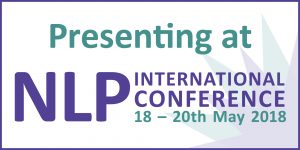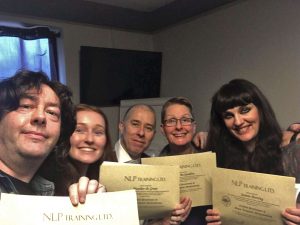It is important to know how to go about creating the future easily. Knowing what a S.M.A.R.T. goal is and creating one are quite different. I have spoken with many people who ‘know’ what a S.M.A.R.T. goal is, but when they state a goal it is clearly not S.M.A.R.T.
For example, I heard someone say they ‘want to be able to…’ The problem with this sentence is that you can always want to be able to.. As you slide forwards through time, the wanting to will also slide forwards. The result is that you can always want to be able to.. It doesn’t set the achievement in terms of successful completion of the task.
When students on my trainings create their S.M.A.R.T. goal, I make sure they fully embrace the technique, create clear goals and move towards then
What is a S.M.A.R.T. goal?
A S.M.A.R.T. goal is defined as one which takes into account all the following criteria.
- Specific
- Measurable
- Achievable
- Realistic
- Timed
Specific – Goals should be simply written, and clearly define what you are going to do
Measurable – You need to know the evidence procedure. How will you know when you have achieved that goal? What will you see, hear, feel?
Achievable – It needs to be achievable by you. You may find achieving the goal a stretch, but it’s defined well enough so it’s possible to achieve it. There will likely be a big picture goal statement, but this will chunk down into smaller goals which are achieved along the way.
Realistic – There may be consequences of achieving a goal, for friends and family (and indeed society and planet), as well as self. Is it ecologically realistic to achieve the goal?
Timed – This is a critical component. You must make sure it is fixed in time so it doesn’t constantly slide forward along the time line.
My formula for setting S.M.A.R.T. goals
You need to state S.M.A.R.T. goals in the present tense, as if already achieved. Sometimes a company has to produce a statement of intent towards certain tasks being completed by a certain date. This would be an exception to the present tense rule.
You need to know the LAST thing that has to happen so you know you have got it. this can be different for different people, even if it is about the same event.
If there are multiple goals you need to work on each one individually, and work chronologically through them all.
Make sure you are IN the image you pull up of the goal being achieved. See yourself in there (otherwise you may achieve it for someone else!)
Whether it is a professional or personal goal, it is important to set a S.M.A.R.T. goal. Each member of a company can have their own goals, which contribute to the larger goals of the company. It ensures that there is good communication between employers and employees and supervisors, so there are no surprises during annual performance evaluations.
It is just as important for personal goals. When you have targets, clearly defined and set in time, you have the perfect way to self assess the rat of development and achievement along the way. Realising how much you are achieving along the way gives impetus to continue to set new S.M.A.R.T. goals, to review and adjust others as necessary, and to keep you accountable towards the life you want to achieve.
Good questions to ask when setting S.M.A.R.T. goals
- What specifically do you want?
- Where are you now in this?
- What will you see, hear and feel when you have it?
- How will you know when you have it?
- What will this outcome get for you or allow you to do?
- Does it depend only on you?
- Where, when, how and with whom do you want it?
- What do you have now and what do you need to get to your outcome?
- Have you ever had this before?
- Do you know anyone who has?
- For what purpose do you want this?
- What will you gain or lose if you have it?
- What will happen if you get it?
- What won’t happen if you get it?
- What will happen if you don’t get it?
- What won’t happen if you don’t get it?
If you follow this simple pathway to creating your future you will have a solid platform from which to leap.
Example
Presenting goal – “I want to make £20,000 quickly”. This was goal from one of my clients.
Now I pointed out that it’s possible to achieve this goal very quickly, but the method might not be legal or morally acceptable! Achievable but not very realistic for him. So when specifically would you like to achieve that goal? The answer was by the end of the year. So the initial goal becomes “It is December 31st 2017 and I have made £20,000”.
Now I ask would it matter if it cost £30,000 to make the £20,000? Of course it would. So it’s not making £20,000, it’s having £20,000 in the bank account at the end of the year. This is measurable now because the client could look at the bank account online and see the money is there on the day. In fact he was going away on holiday and might not be able to see the online account on December 31st, so it was reset to December 29th, before he left. So now the goal is “It is December 29th and I am looking at my account online and I can see that there is £20,000+ in the account today”.
This now fulfils all the component criteria for S.M.A.R.T. goal status. This is the answer to the first and fourth question in the list above. The rest of the questions fill out the goal and make it more solid by stating how they’ll feel, what it will do for them or allow them to do and so on.
If you are following this through and finding the last four questions a stretch – good! It takes some time for people to get their heads around those last four questions. On my trainings I go into those four questions in some detail.
What is it that you want to achieve? Have you broken it down into a series of S.M.A.R.T. goals that you can process easily yet? What’s the very last thing that has to happen in order for you to know that you have achieved that goal? When did you decide to go for it now?


